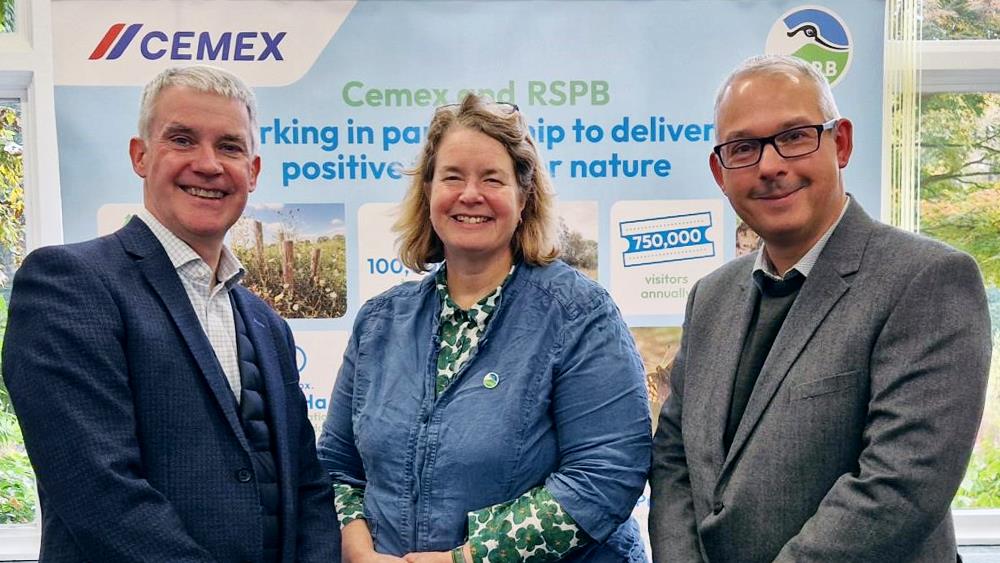

A 15-year partnership between building materials supplier Cemex, and the largest nature conservation organisation in the UK, the RSPB, is celebrating having restored more than 1,750 hectares of priority habitats across more than 50 quarry sites in the UK.
The partnership began in 2009 and was created to improve outcomes for both species and habitats, in particular through restoring quarries once they have reached the end of their working life.
These restoration projects now cover over 600 hectares of grasslands; over 177 hectares of woodland; 100 hectares of heathland, and 190 hectares of ponds and open water with more than 100,000 trees planted in the process.
In providing much needed habitat for a diverse range wildlife, the former quarry land is now providing homes for 46 threatened species of bird, including Willow Tit, Twite, Chough and Turtle Doves.
The anniversary was celebrated with a special event at The Lodge, the RSPB’s headquarters in Sandy, Bedfordshire, where teams from both organisations reflected on the success of the partnership to date and discussed priorities for the future. With plans to continue the collaboration, it is hoped that learnings from the project can help influence policy and practices to better benefit nature and the response to climate change across the sector.
Andy Spencer, Vice President for Sustainability and Corporate Affairs at Cemex, said: “This partnership is great example of what can be achieved through long term collaboration that fosters a deep level of trust and transparency.
“It continues to make good business and economic sense, and has delivered positive outcomes for nature and society, with over 1,750 hectares of priority habitat having been restored to date. I’m excited to see what we can achieve together over the next 15 years.”
Moving forwards, Cemex says it will continue to prioritise its partnership with the RSPB to enhance biodiversity. This forms one of the six pillars of the company's global Future in Action programme, which sets out the roadmap for Cemex to become a carbon net zero business by 2050.
By incorporating biodiversity considerations from the earliest stages of quarry planning, the partnership is helping to minimise environmental impact of the projects, and create a positive lasting legacy.
The development of a habitat-mapping roadmap is enabling Cemex to measure the current levels of biodiversity at its sites, to ensure that its restoration work can be recorded and measured through the establishment of a series of metrics.
This will support Cemex’s future biodiversity programme, Nature Positive by 2030, which focuses on baselining biodiversity levels at existing sites and implementing strategies to increase biodiversity on all sites over time.
The success of the partnership in the UK has been an important model to also inform conservation efforts elsewhere, including through Birdlife International partners across Europe. Developing partnerships within other European Operations, Cemex continues to cement its commitment to enhance biodiversity as responsible stewards of the land it manages.
Beccy Speight, Chief Executive of the RSPB, commented: “Together with Cemex, we've restored habitats, supported threatened bird species, and demonstrated the power of business conservation collaboration within the UK and beyond.
“As we navigate future challenges and continue in partnership to advocate for industry-wide support of these practices, we're excited to continue our work, towards a shared vision of a thriving natural world for us all to enjoy”.
Sean Cassidy, Biodiversity Manager across Cemex’s European teams, added: “We’ve seen a real improvement in the quality of our restoration work over the period of the partnership, and this is a direct result of working closely with the RSPB, who bring specialist knowledge, skills and expertise in this area.
“It’s also a result of the dedication of our site managers and their teams and our ability to better support them with measuring the effectiveness of this vital work.”